Great Astronomers by Robert Stawell Ball (uplifting novels .txt) 📕
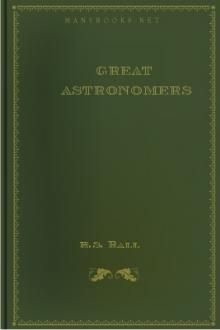
- Author: Robert Stawell Ball
- Performer: -
Book online «Great Astronomers by Robert Stawell Ball (uplifting novels .txt) 📕». Author Robert Stawell Ball
although she talked with me now and then, yet an UNDERCURRENT of
thought was going on in my mind which gave at last a RESULT,
whereof it is not too much to say that I felt AT ONCE the
importance. An ELECTRIC circuit seemed to CLOSE; and a spark
flashed forth the herald (as I FORESAW IMMEDIATELY) of many long
years to come of definitely directed thought and work by MYSELF,
if spared, and, at all events, on the part of OTHERS if I should
even be allowed to live long enough distinctly to communicate the
discovery. Nor could I resist the impulse—unphilosophical as it
may have been—to cut with a knife on a stone of Brougham Bridge as
we passed it, the fundamental formula which contains the SOLUTION
of the PROBLEM, but, of course, the inscription has long since
mouldered away. A more durable notice remains, however, on the
Council Books of the Academy for that day (October 16, 1843),
which records the fact that I then asked for and obtained leave to
read a Paper on ‘Quaternions,’ at the First General Meeting of the
Session; which reading took place accordingly, on Monday,
the 13th of November following.”
Writing to Professor Tait, Hamilton gives further particulars of
the same event. And again in a letter to the Rev. J. W. Stubbs:—
“To-morrow will be the fifteenth birthday of the Quaternions.
They started into life full-grown on the 16th October, 1843, as I
was walking with Lady Hamilton to Dublin, and came up to Brougham
Bridge—which my boys have since called Quaternion Bridge. I
pulled out a pocketbook which still exists, and made entry, on
which at the very moment I felt that it might be worth my while to
expend the labour of at least ten or fifteen years to come. But
then it is fair to say that this was because I felt a problem to
have been at that moment solved, an intellectual want relieved
which had haunted me for at least fifteen years before.
But did the thought of establishing such a system, in which
geometrically opposite facts—namely, two lines (or areas) which
are opposite IN SPACE give ALWAYS a positive product—ever come
into anybody’s head till I was led to it in October, 1843, by
trying to extend my old theory of algebraic couples, and of
algebra as the science of pure time? As to my regarding
geometrical addition of lines as equivalent to composition of
motions (and as performed by the same rules), that is indeed
essential in my theory but not peculiar to it; on the contrary, I
am only one of many who have been led to this view of addition.”
Pilgrims in future ages will doubtless visit the spot commemorated
by the invention of Quaternions. Perhaps as they look at that by
no means graceful structure Quaternion Bridge, they will regret
that the hand of some Old Mortality had not been occasionally
employed in cutting the memorable inscription afresh. It is now
irrecoverably lost.
It was ten years after the discovery that the great volume
appeared under the title of “Lectures on Quaternions,” Dublin,
1853. The reception of this work by the scientific world was
such as might have been expected from the extraordinary reputation
of its author, and the novelty and importance of the new calculus.
His valued friend, Sir John Herschel, writes to him in that style
of which he was a master:—
“Now, most heartily let me congratulate you on getting out your
book—on having found utterance, ore rotundo, for all that
labouring and seething mass of thought which has been from time to
time sending out sparks, and gleams, and smokes, and shaking the
soil about you; but now breaks into a good honest eruption, with a
lava stream and a shower of fertilizing ashes.
Metaphor and simile apart, there is work for a twelvemonth to
any man to read such a book, and for half a lifetime to digest it,
and I am glad to see it brought to a conclusion.”
We may also record Hamilton’s own opinion expressed to Humphrey
Lloyd:—
“In general, although in one sense I hope that I am actually
growing modest about the quaternions, from my seeing so many peeps
and vistas into future expansions of their principles, I still
must assert that this discovery appears to me to be as important
for the middle of the nineteenth century as the discovery of
fluxions was for the close of the seventeenth.”
Bartholomew Lloyd died in 1837. He had been the Provost of
Trinity College, and the President of the Royal Irish Academy.
Three candidates were put forward by their respective friends for
the vacant Presidency. One was Humphrey Lloyd, the son of the
late Provost, and the two others were Hamilton and Archbishop
Whately. Lloyd from the first urged strongly the claims of
Hamilton, and deprecated the putting forward of his own name.
Hamilton in like manner desired to withdraw in favour of Lloyd.
The wish was strongly felt by many of the Fellows of the College
that Lloyd should be elected, in consequence of his having a more
intimate association with collegiate life than Hamilton; while his
scientific eminence was world-wide. The election ultimately gave
Hamilton a considerable majority over Lloyd, behind whom the
Archbishop followed at a considerable distance. All concluded
happily, for both Lloyd and the Archbishop expressed, and no doubt
felt, the pre-eminent claims of Hamilton, and both of them
cordially accepted the office of a Vice-President, to which,
according to the constitution of the Academy, it is the privilege
of the incoming President to nominate.
In another chapter I have mentioned as a memorable episode in
astronomical history, that Sir J. Herschel went for a prolonged
sojourn to the Cape of Good Hope, for the purpose of submitting
the southern skies to the same scrutiny with the great telescope
that his father had given to the northern skies. The occasion of
Herschel’s return after the brilliant success of his enterprise,
was celebrated by a banquet. On June 15th, 1838, Hamilton was
assigned the high honour of proposing the health of Herschel.
This banquet is otherwise memorable in Hamilton’s career as being
one of the two occasions in which he was in the company of his
intimate friend De Morgan.
In the year 1838 a scheme was adopted by the Royal Irish Academy
for the award of medals to the authors of papers which appeared to
possess exceptionally high merit. At the institution of the medal
two papers were named in competition for the prize. One was
Hamilton’s “Memoir on Algebra, as the Science of Pure Time.” The
other was Macullagh’s paper on the “Laws of Crystalline
Reflection and Refraction.” Hamilton expresses his gratification
that, mainly in consequence of his own exertions, he succeeded in
having the medal awarded to Macullagh rather than to himself.
Indeed, it would almost appear as if Hamilton had procured a
letter from Sir J. Herschel, which indicated the importance of
Macullagh’s memoir in such a way as to decide the issue. It then
became Hamilton’s duty to award the medal from the chair, and to
deliver an address in which he expressed his own sense of
the excellence of Macullagh’s scientific work. It is the
more necessary to allude to these points, because in the whole of
his scientific career it would seem that Macullagh was the only
man with whom Hamilton had ever even an approach to a dispute
about priority. The incident referred to took place in connection
with the discovery of conical refraction, the fame of which
Macullagh made a preposterous attempt to wrest from Hamilton.
This is evidently alluded to in Hamilton’s letter to the Marquis
of Northampton, dated June 28th, 1838, in which we read:—
And though some former circumstances prevented me from applying to
the person thus distinguished the sacred name of FRIEND, I had the
pleasure of doing justice…to his high intellectual merits…I
believe he was not only gratified but touched, and may,
perhaps, regard me in future with feelings more like those which I
long to entertain towards him.”
Hamilton was in the habit, from time to time, of commencing the
keeping of a journal, but it does not appear to have been
systematically conducted. Whatever difficulties the biographer
may have experienced from its imperfections and irregularities,
seem to be amply compensated for by the practice which Hamilton
had of preserving copies of his letters, and even of comparatively
insignificant memoranda. In fact, the minuteness with which
apparently trivial matters were often noted down appears almost
whimsical. He frequently made a memorandum of the name of the
person who carried a letter to the post, and of the hour in which
it was despatched. On the other hand, the letters which he
received were also carefully preserved in a mighty mass of
manuscripts, with which his study was encumbered, and with which
many other parts of the house were not unfrequently invaded. If a
letter was laid aside for a few hours, it would become lost to
view amid the seething mass of papers, though occasionally, to use
his own expression, it might be seen “eddying” to the surface in
some later disturbance.
The great volume of “Lectures on Quaternions” had been issued, and
the author had received the honours which the completion of such a
task would rightfully bring him. The publication of an immortal
work does not, however, necessarily provide the means for paying
the printer’s bill. The printing of so robust a volume was
necessarily costly; and even if all the copies could be sold,
which at the time did not seem very likely, they would hardly have
met the inevitable expenses. The provision of the necessary funds
was, therefore, a matter for consideration. The Board of Trinity
College had already contributed 200 pounds to the printing, but
yet another hundred was required. Even the discoverer of
Quaternions found this a source of much anxiety. However, the
board, urged by the representation of Humphrey Lloyd, now one of
its members, and, as we have already seen, one of Hamilton’s
staunchest friends, relieved him of all liability. We may here
note that, notwithstanding the pension which Hamilton enjoyed in
addition to the salary of his chair, he seems always to have been
in some what straitened circumstances, or, to use his own words in
one of his letters to De Morgan, “Though not an embarrassed man, I
am anything rather than a rich one.” It appears that,
notwithstanding the world-wide fame of Hamilton’s discoveries,
the only profit in a pecuniary sense that he ever obtained from
any of his works was by the sale of what he called his Icosian
Game. Some enterprising publisher, on the urgent representations
of one of Hamilton’s friends in London, bought the copyright of
the Icosian Game for 25 pounds. Even this little speculation
proved unfortunate for the purchaser, as the public could not be
induced to take the necessary interest in the matter.
After the completion of his great book, Hamilton appeared for
awhile to permit himself a greater indulgence than usual in
literary relaxations. He had copious correspondence
with his intimate friend, Aubrey de Vere, and there were
multitudes of letters from those troops of friends whom it was
Hamilton’s privilege to possess. He had been greatly affected by
the death of his beloved sister Eliza, a poetess of much taste and
feeling. She left to him her many papers to preserve or to
destroy, but he said it was only after the expiration of four
years of mourning that he took courage to open her pet box of
letters.
The religious side of Hamilton’s character is frequently
illustrated in these letters; especially is this brought out in
the correspondence with De Vere, who had seceded to the Church of
Rome. Hamilton writes, August 4,
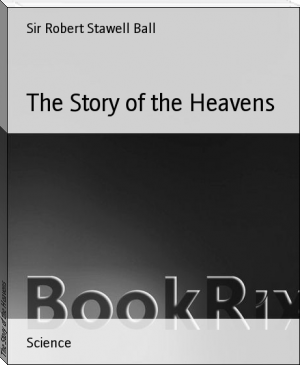
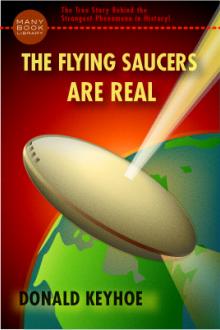

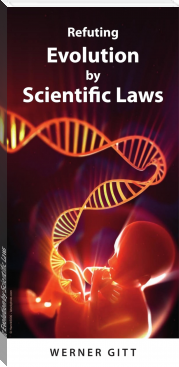
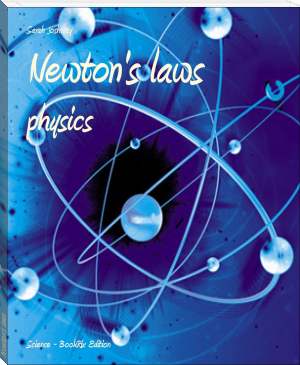
Comments (0)